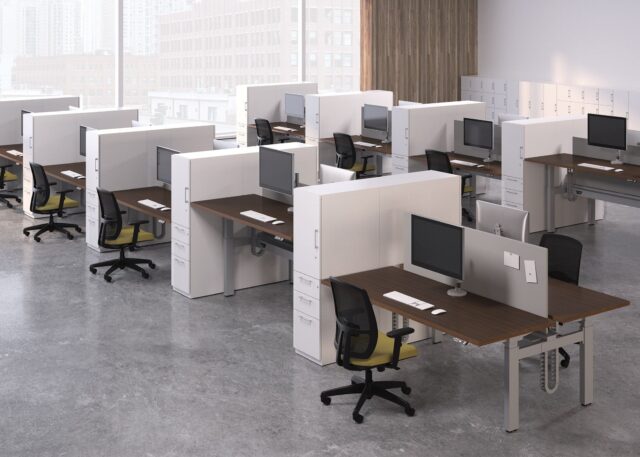
If you’re reading this article, you’re probably sitting down somewhere. But are you comfortably seated? How is your posture? Are you straining your eyes?
Any extended sitting, including working at a desk, in front of a screen, or behind a wheel can be harmful. The Mayo Clinic has reported that those who sit for more than eight hours a day with no physical activity have a significantly higher chance of dying early.
In the U.S., 81 million office workers spend at least 75% of the day at a desk! So that means millions of people are damaging their health because their job requires them to sit.
The good news is there are individuals and companies out there who refuse to sit back and passively watch this issue affect so many employees.
A move to customize workstations
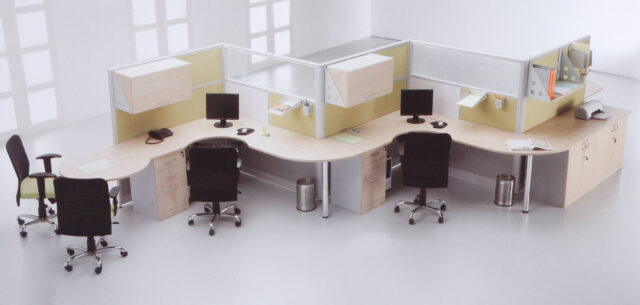
A research team was awarded a $667,000 grant from the National Science Foundation to design a workstation that uses artificial intelligence to learn and adjust to worker preferences and patterns. The hope is that workstations will become more accommodating to individual needs, and help maintain employee health and productivity.
Leaders who are responsible for connecting people and workplaces know that the work experience can be improved. In fact, the global shift to a hybrid work model has shown everyone in the corporate world that big changes are possible – and not all changes are bad.
This research team is harnessing the power of AI, using simple sensors to study and measure employee performance, room temperature, lighting, and ergonomics. These four things are closely linked; that’s not a surprise. However, the real challenge is to figure out how to give each team member the right combination of light, warmth and support to maximize their productivity.
While recent trends of sit-stand desks, adjustable chairs and monitors are proving to be beneficial, not everyone is taking the initiative to adopt and use them. People may lose motivation to stand up every hour, or they may not be able to keep the setup that works best for them if they are sharing workspaces.
A smart workstation can adjust to an individual’s unique preferences, and may even be able to prompt healthier behaviors. Offices could even adjust temperature or lighting automatically based on the number of people detected in the workplace. The research team mentioned at the top of this section is currently collecting focus-group input about how smart workstations should offer prompts, including the degree of automation users are comfortable working with. Most people wouldn’t want a desk to start rising on its own if they’re in the middle of an important call. At the same time, some people will need a small “push,” so to speak, to ensure healthier behaviors are maintained.
Sensors
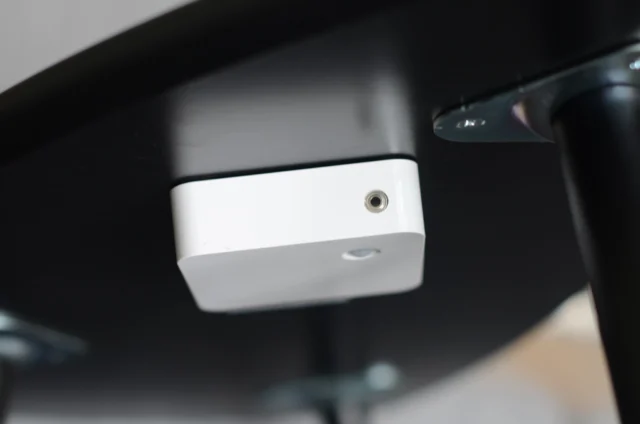
Sensors are practical and versatile additions to any progressive office network. Many offices that are trying to provide an augmented employee/tenant experience are combining sensors with software like Office Control to gather useful data and make positive changes.
Configured properly, sensors play an important part in simple cause-and-effect automations and more crucial mission-critical workflows.
There are different types of sensors, including passive infrared sensors, software sensors, proximity sensors and environmental sensors.
Companies or facilities managers may combine different sensor types to gain a comprehensive understanding of how staff interact with and react to their office. However, desk sensors are the best place to start. For companies easing into flexible work or agile environments, desk sensors will quickly become essential.
How desk sensors work
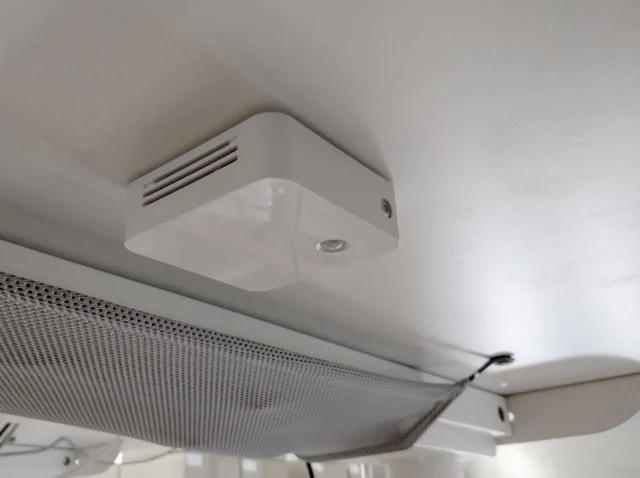
Desk sensors use a type of technology called a passive infrared (PIR) sensor. This is the same type of sensor used in motion detection equipment. PIR sensors are activated when there’s a measurable change.
Most office desk sensors are installed directly on desks. They only have a PIR range of a few feet. An unoccupied desk is the baseline, which means the sensor is in a resting state, or off. When someone stands in front of the desk or sits down to work, the sensor triggers a change in status, and is then activated or on. The change would be noted in whatever system is used to track available desks. The sensor may return to its resting state if the employee leaves their desk for longer than 45 minutes. The time it takes for the status change to occur can be customized. This is the simplest application of sensors.
A popular and more sophisticated application starting to emerge for these sensors is modulating HVAC heating and cooling using exact people counts. By having the temperature adjusted based on real data, buildings can cut their heating and cooling costs by upwards of 30 % a year.
Optical and infrared sensors can detect light and temperature. They are more expensive, but also do more to help with employee health and happiness.
Practical applications
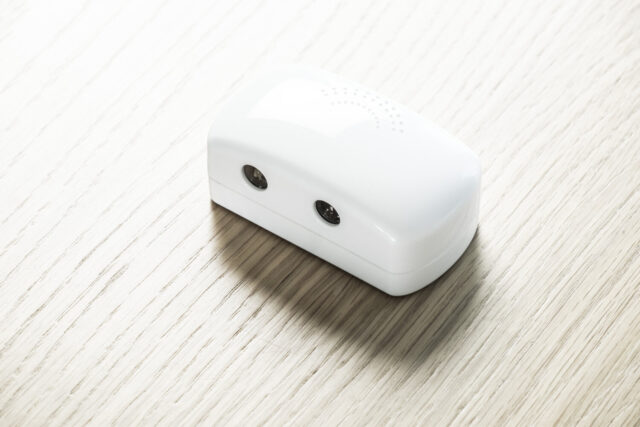
If an employee comes into work looking for a workspace, the office manager or entire team will have the ability to see what’s available and what isn’t based on the sensors that are activated. The sensors won’t create profiles for each employee (although that could be arranged if an employer wanted that feature), but they will note the average time employees stay at the desk.
These sensors can also help staff find vacant meeting spaces. The sensors become particularly useful for big offices that have multiple floors.
The end goal
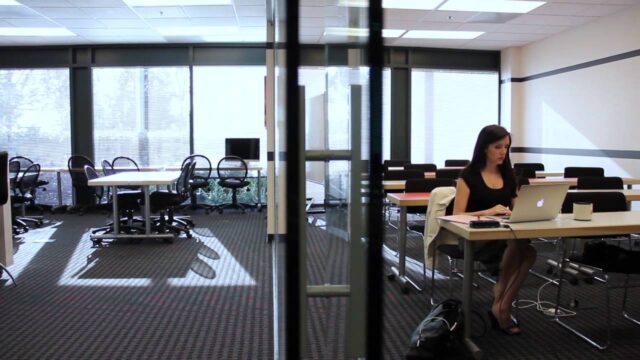
Smart workspaces are intended to make employees feel better while at work. As a result, they will perform better, boosting productivity for companies.
While many employees are used to cookie-cutter workspaces, smart workstations will aim to give individuals the freedom to customize their space. Right now, employees can adjust chairs, desks, and monitors, but eventually, workers may be able to control the temperature or lighting around them. How great would that be for people who are always too hot or too cold?!
Sensors will help employees find the best sitting position for them, give them gentle reminders about when to move, and provide optimal lighting. These little things make the employee experience exponentially better.
Conclusion
Smart workstations are expected to become more common as buildings and companies look for better, meaningful ways to support employees. In the meantime, if you’re leaving work with a sore back or headache, you may consider talking to your HR manager or boss about investing in better work equipment. Ergonomic chairs, standing desks, kneeling chairs and monitor stands have become essential in some workplaces.
Mini desk fans are also excellent accessories if you find that the heat is too high in the winter.
Keep your mouse nearby, and regularly change it from one side of your body to the other so that you’re not overworking one hand. Use a headset if you’re on the phone a lot. Find shortcut keys you can use while typing, and use a document holder so you don’t have to keep staring straight down.
Finally, make a habit of standing up and walking a bit every 30 minutes. It might sound like an annoyance at first, but it can make a big difference for your body and overall health.












